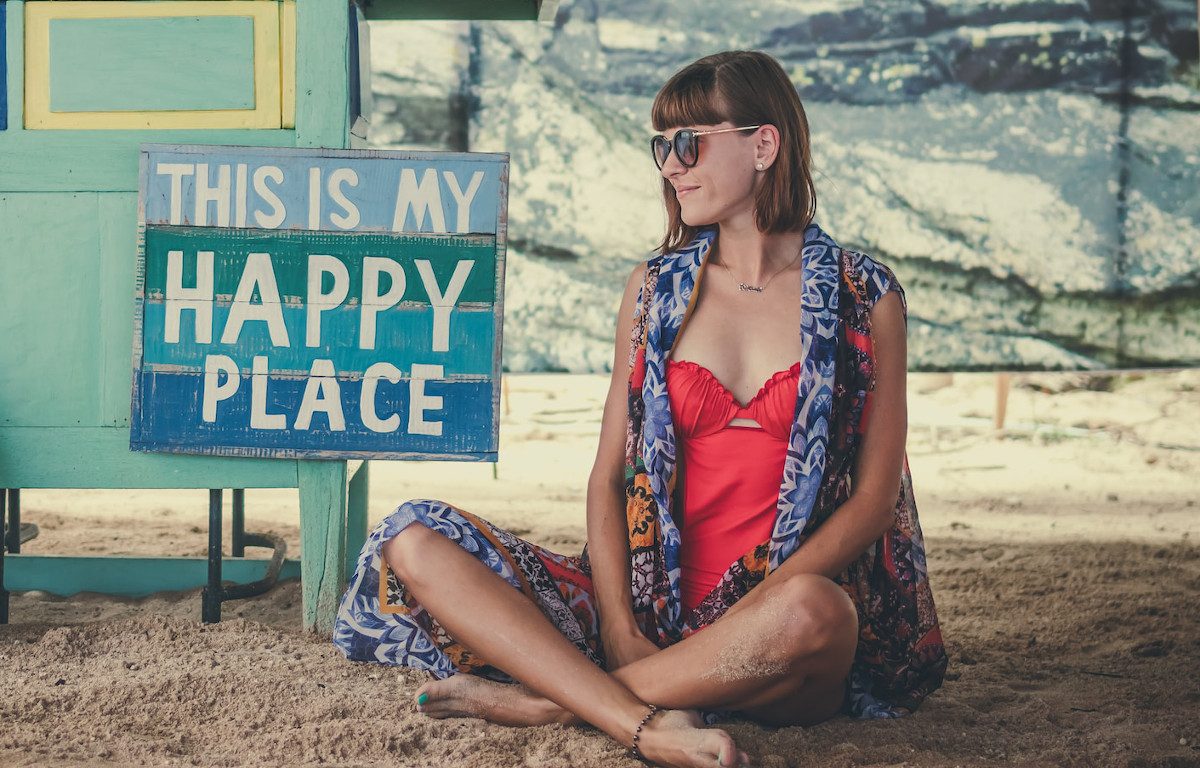A happy place is where we can retreat to go away from the stress of our day-to-day routine, its purpose is to help reduce anxiety and find calm. It differs for each person, but we all need one. For some it can simply be an imaginary destination of ones ideal place that will be bring us all the happiness in the world. For others, it is a real place that they have access to regularly or the memory of a place that once was in their lives.
Our happy place is where we escape to when we need to recharge. Typically when one thinks of this place, or if one is physically in it, we experience positive feelings. For places that are hard to get to regularly, keeping a photo of the location nearby can help transport you to that location. This could be your yearly vacation spot or where you dream of going someday. Others can easily meditate on it, and benefit from the focused mindfulness that brings on a moment of stress reduction. For others it can also be an activity that they do, such as gardening, going to yoga, hiking in the mountains, or scuba diving.
Using your senses to find your own happy place
If you don’t already have a happy place, and finding it is difficult, try this exercise to see if you can uncover a dormant memory of such a place. Let’s start with smell, one of the greatest triggers to recall forgotten memories. Are there certain smells that make you smile? If you aren’t sure of that answer automatically, begin by smelling a few different foods. Also try scents. Do any memories pop up?
Warm apple pie cooling on the window sill of your grandmothers house during your summer visits? Popcorn drizzled with butter from the old neighbourhood movie theatre? The lake where you go fishing every summer with your dad? Now that you have a smell in mind, can you focus on some of the other senses that surround that? Is the image getting clearer in your head the more you think about it?
Think of the sounds that bring you relaxation when you hear them. It could be the sound of birds chirping in the yard, the sound of white noise to help you fall asleep at night, or your favourite song on vinyl. Now imagine you are hearing that sound, and embrace the relaxed state it puts you in. It’s that easy. If you find yourself going in and out of that state, don’t worry, with practice you can sustain it longer.
Your visual experiences often contribute significantly to the recollection of your happy place. What are the colours and patterns of the things surrounding you in your happy place? Are you outdoors or indoors? Can you see other people with you? Do you prefer a minimalist space or one filled with things?
Using your imagination to create your own happy place
You can also construct your own ideal happy place for you to reference in future. It sounds a little silly, but there are no rules dictating that it has to be real. Remember how much fun it was creating imaginary places and stories as a child? So how do we start this exercise?
What are the places or things in your life, present or past, that make you feel happy, safe, supported, loved? Is there something you wish you could do or a place you would like to go to? What is familiar or positive in your life that you would like more of? Are there memories or parts of them popping up? If a clear image is challenging, perhaps a collage of various elements can help you reach an imaginary destination.
My Happy Place
When I was doing this exercise the perfect happy place for me was a memory from my childhood. It was a hot summer day. We were on a family road trip and we stopped for a break by a creek. It was also a space that sparked one of my first awe moments. This was before cell phone days, so selfies weren’t a thing yet. But what was the strongest element of this? I felt loved and supported. I have no idea where we were. And based on the now distorted memory, I have a skewed recollection of the days’ events.
So I decided to create a space that is similar, that I can go to regularly when I need to. I found pictures that represented what I saw and did on that day to the best of my memory. It actually helps trigger the feelings of being loved and supported because it links it to that memory and why it matters to me. With that curated recollection, I have created a place I can go to, when I need to, with little effort, reaping the rewards of positive feelings.
What’s your happy place?
Once you have identified where or what your happy place is, spend some time thinking about it. Try not to rely on others to have access to your happy place. So a class at the gym that only runs once a week at a set time would not be a great fit. The intent of your space is to be a refuge from day-to-day life. Visit your happy place regularly. Sometimes having another option is warranted if circumstances prevent you from going to or doing the activity of your ideal happy place. Set yourself up for success and find ways to make it more accessible.
Your happy place can change over time as our needs change, but it should be a place that you feel happy and safe in. It should provide a space to ground yourself and start over. Having a picture of your happy place makes it easier to go there in times when thinking straight is difficult. So a picture frame or a digital copy on your devices can help you retrieve it more easily. It’s also a great piece to add to your self care vision board.
If it is an activity that you do, ensure you can easily start it by setting up a dedicated nook in your home, eliminating extra work to get going. Having a picture of yourself doing the activity, can also be a way to access the space when you can’t physically be there doing it. And remember that you can also access similar stress-relief results through visualization exercises of your happy place that engage all your senses.
IMAGE CREDIT: Unsplash | Artem Beliaikin.

